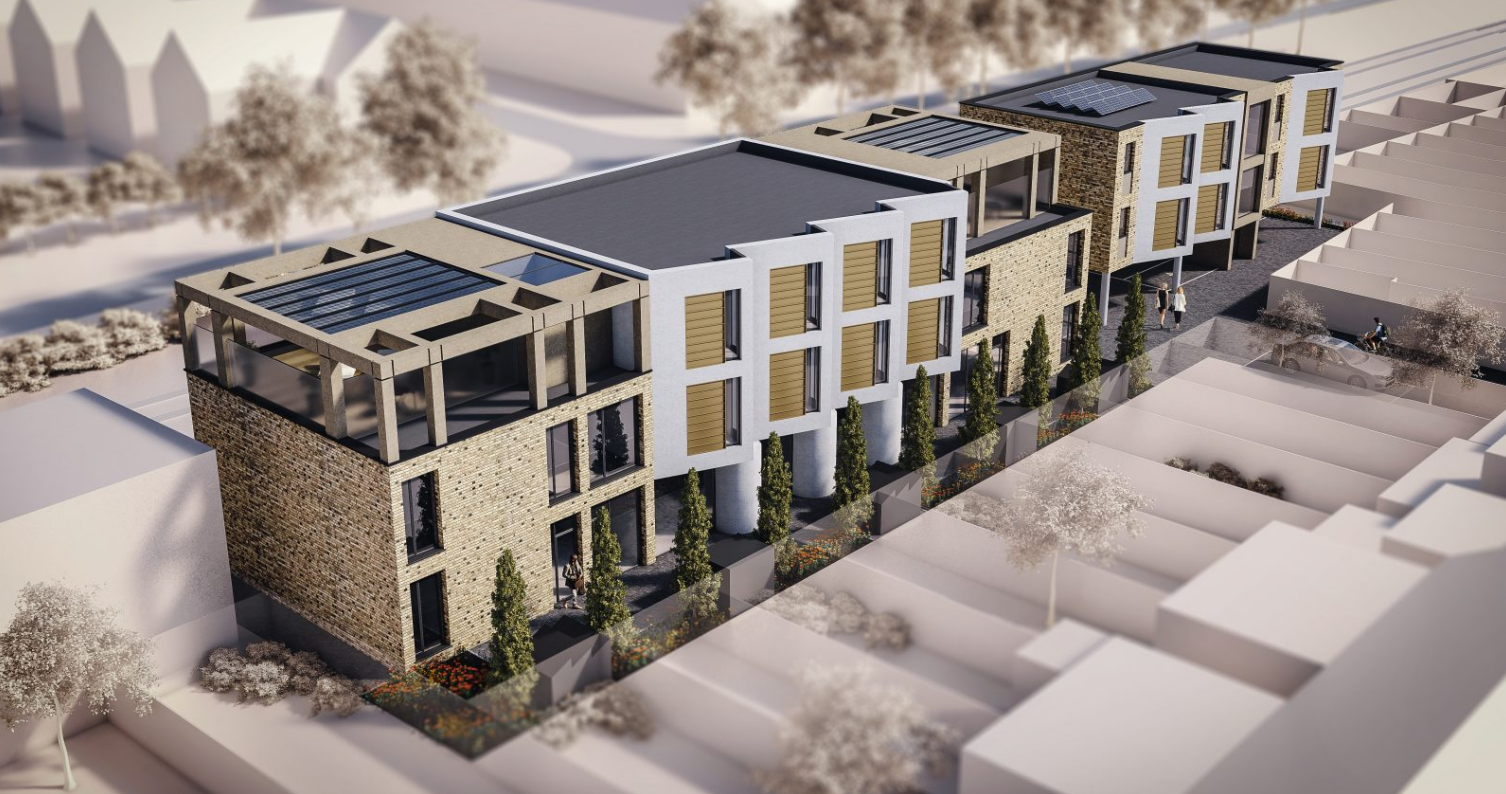Time to press ahead with brownfield development?
Our response to the government’s proposed NPPF changes
Sandycombe Road, a backland site in south west London
The government’s proposed changes to the National Planning Policy Framework (NPPF) have been well discussed across the property and construction sector over recent weeks.
With word changes here and there, there has been a subtle (or not so subtle) shift in the government’s message about how we should be delivering sustainable development through the planning system.
The proposed changes raise a whole host of issues and debates, but if we have to highlight where the opportunities lie for our clients, one thing sticks out.
A renewed focus on brownfield development.
So, here’s a short round up of what the NPPF is now saying about brownfield development, and how to make the most of the opportunity.
What’s changed in the NPPF?
First there are the tweaks to the methods for delivering a sufficient supply of homes. Then there’s new references removing obligations to meet housing needs where densities would be out of character with an area. And don’t forget, the renewed emphasis on protecting the Green Belt.
What does it all boil down to?
Greater national policy support for development on brownfield sites in urban areas.
It’s not that there wasn’t already a policy preference for brownfield, but with the added protections and change in emphasis on how we calculate housing need, there is an increased policy support for brownfield development proposals.
And if those subtle shifts weren’t obvious enough, we get it in black and white: the Standard Method for calculating housing need will now incorporate an uplift for the top 20 most populated cities and urban centres, and (at footnote 30) “brownfield and other under-utilised sites should be prioritised”, and density “optimised”.
You know the ones. Sites with inherent technical constraints, incompatible neighbouring uses and viability problems.
Lucky for you, tight, tricky sites with questionable viability are our bread and butter. We just love working on them to find solutions.
Our tips on maximising the opportunity of brownfield
After many years working in the business of solving commercially shaky conundrums on our clients’ urban infill sites, we’ve learnt a thing or two.
Tip One: keep an open mind
When you’re first considering a brownfield site, whether it’s a backland site or something more prominent, keep in mind that it’s the government’s clear agenda to prioritise brownfield over greenfield.
Take the time to seek planning advice on the site’s potential.
When we conduct site appraisals for clients, we’ll look at the site’s planning history, the local plan and the council’s wider ambitions for an area, to understand its true potential.
Tip Two: Get the right planning strategy
Whether it’s understanding a local authority’s housing shortage, or their wider aspirations for intensifying industrial uses in a particular area, get clear on what the strategy is going to be for your site. What benefits will the local authority get with your proposal? How will you be helping them to deliver on their wider aims?
Getting your story straight is key to a successful proposal.
Tip Three: Prepare the groundwork (and we don’t mean literally)
It’s important to understand your site’s constraints and get the right experts in at the outset.
Site adjacent to a railway line? We’ll need a really good noise consultant on board.
Within the setting of an important listed building? The scheme will need a sensitive design.
And, of course, talk to the local planning authority early on in the process.
Tight brownfield sites will always have sensitive neighbour uses to address. But coming up with solutions to these challenges is what makes our job fun!
Tip Four: Do your due diligence
Brownfield sites can be expensive, so make sure that you do your due diligence at the outset.
We’ve lost count of the number of times we’ve been asked to revisit another architect’s drawings and have picked up technical incompatibilities that will cost in the long run. Not ideal when you’re already facing the prospect of spiralling decontamination costs.
Tip Five: Go above and beyond on design
While costs are never easy to balance on a previously developed site, identifying elements where the design can go beyond policy requirement will build your case. With building regulations being ratcheted up to address climate change and the biodiversity crisis and to meet ambitious net-zero target, take the opportunity to go beyond the minimum to be able to offer the planners something MORE.
We firmly believe that good quality design doesn’t have to be sacrificed for a viable scheme.
Time to revisit your brownfield sites portfolio
Yes, it’s true that previously developed sites can often be rife with unexpected problems (discovered a historic scrap yard under your site recently?) and will test even the most optimistic viability consultant’s resolve.
But, with added policy support for brownfield first, it’s well worth revisiting those sites that have come up against policy hurdles. The national planning policy landscape has shifted and if we’re going to make a dent on addressing our national housing crisis then sites with constraints will need to be seen under a different light.
A word of warning, though. Don’t be too hasty – those policy hurdles still matter and it will serve you well to get a clear planning strategy in place to secure that valuable consent.
Get in touch if you need help turning a difficult brownfield site into your next valuable development scheme. With our architectural and planning expertise we can devise a planning strategy to give your site the best chance through the planning process.


